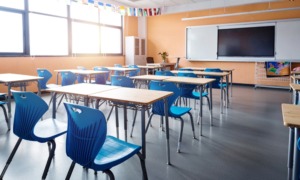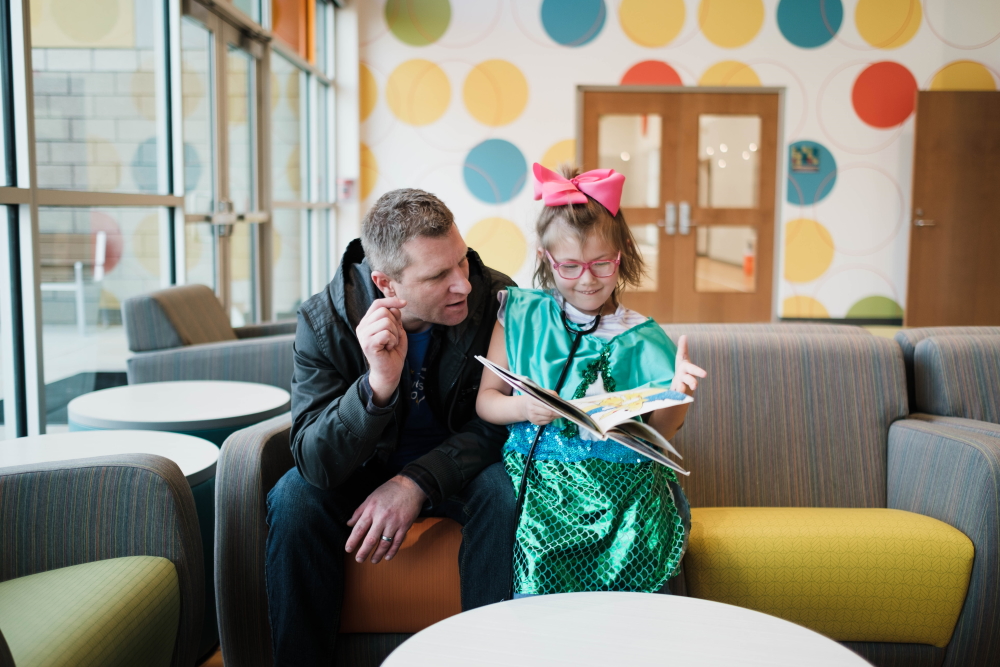
Photos by Simon Hurst Photography
A child reads to Kelly Berger, Positive Tomorrows’ director of family support, in the school family room.First of several in a series
(EDITOR’S NOTE: This is the first of several articles in an occasional series about the intersection of OST and students experiencing homelessness.)
Last spring, a teacher in Oklahoma City, Oklahoma, sat at a lunchroom table with her fourth and fifth grade students.
One of the boys spoke up suddenly: At my other school, I was the bad kid, he said.
“Me too,” another student said.
“Me too,” another chimed in. “Me too,” said a fourth.
The students and teacher were at Positive Tomorrows, an elementary school for Oklahoma City kids whose families are homeless.
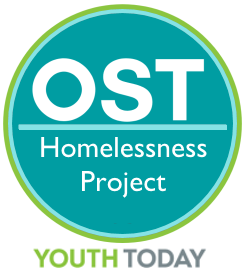 Since they enrolled at Positive Tomorrows things were a bit different for these students. No one made fun of them for not having school supplies. They were not at the bottom of the class. In this school, they did not stand out as deficient.
Since they enrolled at Positive Tomorrows things were a bit different for these students. No one made fun of them for not having school supplies. They were not at the bottom of the class. In this school, they did not stand out as deficient.
Monarch School in San Diego and the Boyce Ansley School in Atlanta, specifically for homeless children. It provides basic necessities for kids and families, offers personalized academic instruction in a “high structure-high love” environment and has a strong focus on enrichment for these most impoverished students. Parents get a wide variety of resources and case management. It can serve 100 pre-K to sixth grade students.
“One of the things we see with our students is a huge lack of experience,” said Susan Agel, president and CEO of the nonprofit school. One second grader last year had never been in a retail store or in a car, she said.
“He had never seen his parents buy anything,” Agel said. He had only used public transportation.
An end to ’no’
Many people take for granted that kids get music lessons or play on a basketball team or take part in other childhood activities, but the students at Positive Tomorrows have not done those things, she said.
“We will see kids who basically spent most of their early years sitting in a motel room. … There’s no place to play,” Agel said.
At Positive Tomorrows the after-school program and summer camp are extremely important. Although the school closed temporarily in March because of the pandemic, summer camp opened this summer and the school is operating in person this fall.
As research has shown, out-of-school time experiences can build young people’s identities and expand their social networks, strengthening these children in areas they need strengthening.
The children who come to Positive Tomorrows have been told “no” repeatedly, Agel said. No, they can’t afford to buy a candy bar. No, they can’t go to the ball game. It leads to hopelessness, she said.
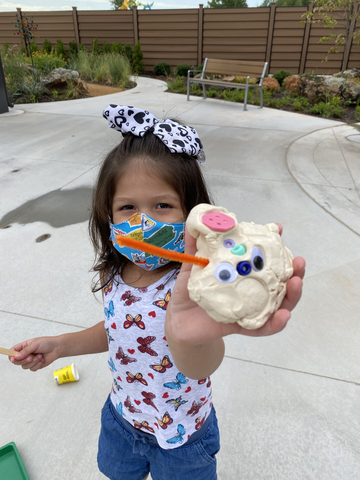
A child shows off the Play-Doh monster she made.
In the after-school and summer program, children do art, music, science projects and gardening. They take part in Girl Scouts, Boy Scouts and drama classes. They do physical activities such as rock climbing. They take swimming lessons and go to museums.
The Oklahoma City Ballet provides ballet classes each week and all students attend.
“It’s so important for us that they try everything,” Agel said.“We want them to develop a passion for something because, for a lot of people, that feeds into their desire to go to school or to excel in an area,” she said. “All of that is crucial to developing skills to be able to perform well in the classroom and just to be a regular person.”
‘Couch homeless’
This positive youth development approach builds on a young person’s strengths rather than trying to fix their problems. Even more important, it gives kids the opportunity to develop a trusting two-way relationship with an adult, shown to be a critical factor in positive youth outcomes.
Poverty, in itself, is linked to poorer outcomes for young people and homelessness is a deep form of poverty.
Across the nation, 1.5 million students are homeless, and the numbers have grown in the past decade.
Last year, two of the Positive Tomorrows families were living in tents. Other families have been in basements, garages and in abandoned houses, Agel said.
Many families are “couch homeless,” staying with a relative for a few days or with an acquaintance the next day and maybe moving to a motel if they get some cash, Agel said. According to the National Center for Education Statistics, more than three-quarters of homeless families fit that description, while 18% were in shelters and 4% were unsheltered.
Many of the families have experienced domestic violence, Agel said. Other issues are substance abuse and mental health problems.
Steady routine and trauma-informed
The stated mission of Positive Tomorrows is to end the cycle of homelessness.
A first step at the school is to remove barriers to learning. This means providing basic necessities such as school supplies, food or clothing. Public transportation in Oklahoma City is limited, but a school bus picks up children wherever they are and in spite of multiple address changes, Agel said.
During the school day, students work on individualized lessons since few are at the same level and they are frequently behind grade level.
A crucial ingredient is that the school climate is trauma-informed. The accrediting agency AdvancEd described the school as one in which teachers do not raise their voices at children and children are allowed to take naps or have a snack whenever necessary.
Trauma-informed, however, does not mean loosey-goosey. Education Director Amy Brewer emphasizes a school culture with a great deal of routine and a great deal of support, including an understanding of what the children have experienced.
[Related: Social Emotional Learning Critical In Atlanta School For Homeless Kids]
Agel recounts a day when some of the boys stopped up the bathroom sink with paper towels and let the water run.
“Basically, the response was, they had to go clean it up. I mean, that was it. You go clean it up,’ she said.
Check-ups and case managers
In many schools, students are suspended for problem behavior, but suspension really doesn’t do anything helpful for the student, Agel said. At Positive Tomorrows, bad behavior is described as an opportunity to learn.
“We have very high expectations for children. … But we also know that just like anybody, they’re going to fail,” she said. “So they’ll get support to get back where they need to go.”
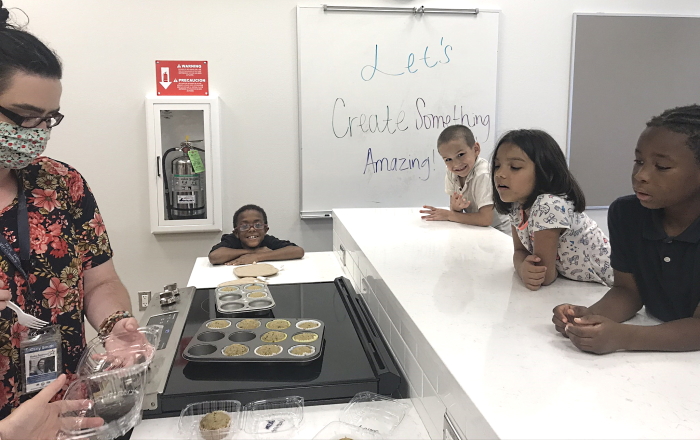
Kindergarten and first grade teacher Carly Smith shows students how to make zucchini-bread cupcakes.
Through its family support department, kids get health checkups, dental screenings and eye exams. Parents get case managers who help them find housing and connect them with a variety of services and counseling.
In 2018-19 average daily attendance was 90% and the majority of families improved their employment status, according to the annual report.
Positive Tomorrows was started in 1989 by a group including Oklahoma City Public Schools, CampFire USA, Neighborhood Services Organization, the local YWCA and the state Department of Education. Initially the school had federal funding through the McKinney-Vento Act but changes to the law ended federal support.
It’s now supported by private donors. A capital campaign raised $10.5 million for a large new building, allowing the school to move last year from the church educational building it had occupied.
Inside the bright new building are a maker space and an art/music room, part of Positive
Tomorrow’s emphasis on experiences that go beyond academics to strengthen children’s development.
One child said what he liked best about his school: He always got a second chance, Agel said.






